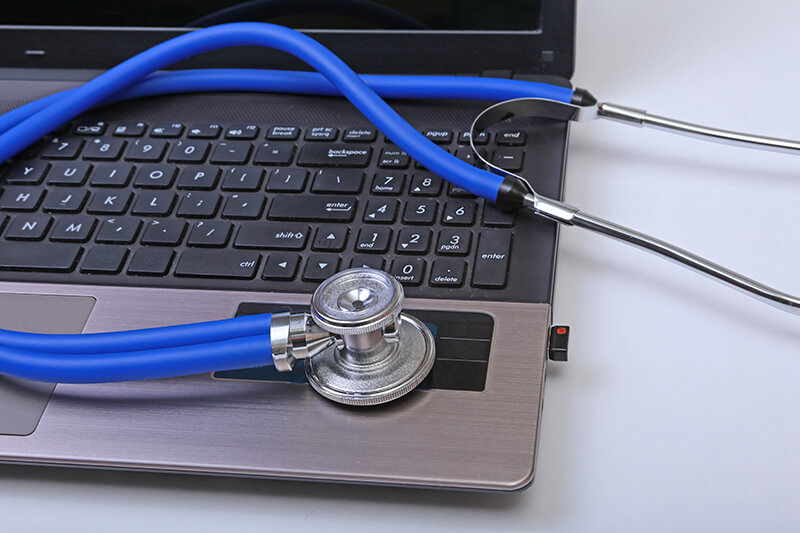Pemphigus is a rare group of autoimmune diseases that causes blisters and sores on the skin and inside the mouth, nose, throat, eyes, and genitals. These lesions that form quickly may last for years, with new blisters appearing in the same area of the skin after one blister goes away. Certain risk factors for this disease include age, geographic location, genes and medications. Dermatologists diagnosing and treating this skin condition can rely on professional dermatology medical billing services provided by experienced medical coding companies.
Pemphigus mainly affects the outer of the skin (epidermis) and causes lesions and blisters that are easily ruptured. It tends to be a long-lasting or chronic condition, and some types can be life-threatening without treatment. However, the condition isn’t contagious and the symptoms can be managed with medications to help the skin heal.
Pemphigus Types
There are different types of pemphigus. It is categorized, based on the layer of skin where the blisters form and where the blisters are found on the body.
- Pemphigus Vulgaris (PV) – This is the most common condition, where blisters may form at the mouth first and then spread to the skin and in other mucous membranes, even the genitals. Blisters can be painful, making it difficult to chew and swallow.
- Pemphigus Foliaceus (PF) – This type of pemphigus forms blisters only on the skin and often develops on the face, scalp, and upper body, not in the mouth.
- Pemphigus Vegetans – This type can cause blisters on the groin, under the arms, and on the feet.
- IgA Pemphigus – Caused by the IgA antibody, this type resembles pemphigus foliaceus or may appear as small pustules. The two distinct subtypes are – subcorneal pustular dermatosis (SPD) and intraepidermal neutrophilic dermatosis (IND).
- Paraneoplastic Pemphigus (PNP) – This type is characterized by painful blisters in the mouth, lips, oesophagus or skin, and often represents the presence of the underlying cancer.
- Drug-induced Pemphigus- Pemphigus can occur after taking certain medicines such as some antibiotics and blood pressure medications. For instance, penicillamine is the most common cause of drug-induced pemphigus.
Symptoms can vary based on the type of pemphigus the patient has but could include blisters or sores that leak clear fluid or may bleed lightly, fluid-filled bubble or blister on the skin, sores with a crusty appearance, itchy skin, and more. Pemphigus vulgaris can lead to other problems, such as blisters and sore patches that can cause life-threatening problems such as sepsis, weight loss and malnutrition, tooth decay and gum disease. Some of the severe symptoms of this condition are fever, fatigue, muscle weakness, vision problems and light sensitivity.
Pemphigus – ICD-10 Codes
- L10 Pemphigus
- L10.0 Pemphigus vulgaris
- L10.1 Pemphigus vegetans
- L10.2 Pemphigus foliaceous
- L10.3 Brazilian pemphigus [fogo selvagem]
- L10.4 Pemphigus erythematosus
- L10.5 Drug-induced pemphigus
- L10.8 Other pemphigus
- L10.81 Paraneoplastic pemphigus
- L10.89 Other pemphigus
- L10.9 Pemphigus, unspecified
Diagnostic procedures for pemphigus may include a physical examination of skin blisters as well as special testing and clinical presentation such as lesion biopsy, direct immunofluorescence, indirect immunofluorescence or an antibody titer test.
CPT Codes to Report Lesion Biopsy
- 11102 Tangential biopsy of skin (e.g., shave, scoop, saucerize, curette) single lesion
- 11104 Punch biopsy of skin (including simple closure, when performed) single lesion
- 11106 Incisional biopsy of skin (e.g., wedge) (including simple closure, when performed) single lesion
Though there is no cure for pemphigus or pemphigoid, the signs and symptoms can be controlled mainly using corticosteroids (prednisone, an anti-inflammatory medication to suppress the normal function of the immune system), steroids (topical or systemic steroids), Rituximab (FDA-approved first-line therapy), plasmapheresis or intravenous immunoglobulin therapy (IVIG). Other medications that may be prescribed to suppress the immune system include azathioprine, mycophenolate mofetil, methotrexate, and cyclophosphamide.
Accurate and efficient medical billing and coding is essential for any dermatology practice to receive maximum reimbursement for the services provided. By outsourcing the tasks to a reputable dermatology medical coding company that provides the services of AAPC-certified coding specialists, dermatology practices can ensure correct and timely medical billing and claims submission.




